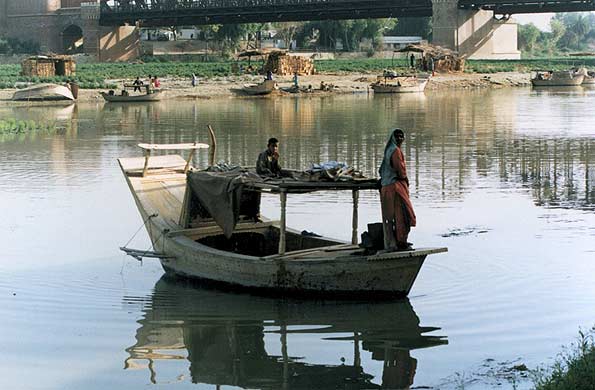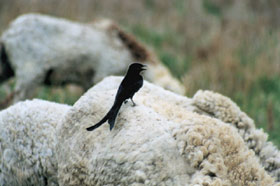


The Central Indus Wetlands Complex consists of a continuum of wetland resources along the main stem of the lndus River between the town of Chashma in the north and the city of Sukkur in the South. It includes braided and meandering river channels, islands, dhands or oxbow lakes and seasonally flooded depressions in the flood plain. The environment in which the Complex is embedded is a vast, gently sloping semi-arid plain ranging in elevation from 125 m in the south to 585 m in the north. The Complex, which is approximately 708 km long and varies in width from c. 9 — 23 km, occupies an area of about c. 9,700 km.
The main stem of the Indus River and its associated flood plain have been identified as the principal flyway for migrant bird species in the sub-region. All or part of this migration route may be used by up to 66 different species of bird including several threatened taxa such as the Sarus Crane (Grus antigone). In addition, the lndus River within the Mekran Coastal Wetlands Complex supports more than 95% of the surviving population of the endangered and endemic Indus River Dolphin.
 The Central Indus Wetlands Complex is fairly densely populated with a high ratio of rural population and low industrial development. As a result, the socio-economic conditions in the region present a high level of poverty, income disparity and dependence on agriculture and natural resource based incomes. Farming, fishing and other natural resource-based occupations form major sources of livelihood for the poor. Credit facilities are limited, mainly consisting of private sources, and repayment rates can be as high as 25%. Irrigated farming is the main livelihood in the area. Cotton, wheat and vegetable are the main crops grown for the urban market. The level of agrochemical use in farming is steadily increasing. Livestock ownership mainly supports agricultural income in the region. Fishing, involves a large number of people in the region mainly under a contract system that generally exploits poor fishermen. Traditional fishing methods are still used involving hook and line and nets of various types and size. Population pressures are high and a majority of the population, especially female has a poor access to health and education.
The Central Indus Wetlands Complex is fairly densely populated with a high ratio of rural population and low industrial development. As a result, the socio-economic conditions in the region present a high level of poverty, income disparity and dependence on agriculture and natural resource based incomes. Farming, fishing and other natural resource-based occupations form major sources of livelihood for the poor. Credit facilities are limited, mainly consisting of private sources, and repayment rates can be as high as 25%. Irrigated farming is the main livelihood in the area. Cotton, wheat and vegetable are the main crops grown for the urban market. The level of agrochemical use in farming is steadily increasing. Livestock ownership mainly supports agricultural income in the region. Fishing, involves a large number of people in the region mainly under a contract system that generally exploits poor fishermen. Traditional fishing methods are still used involving hook and line and nets of various types and size. Population pressures are high and a majority of the population, especially female has a poor access to health and education.